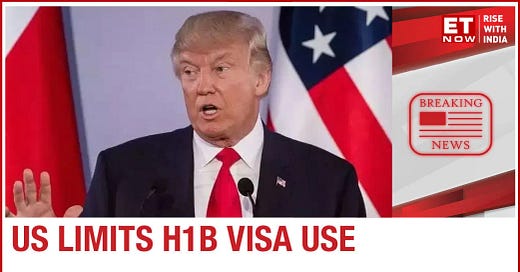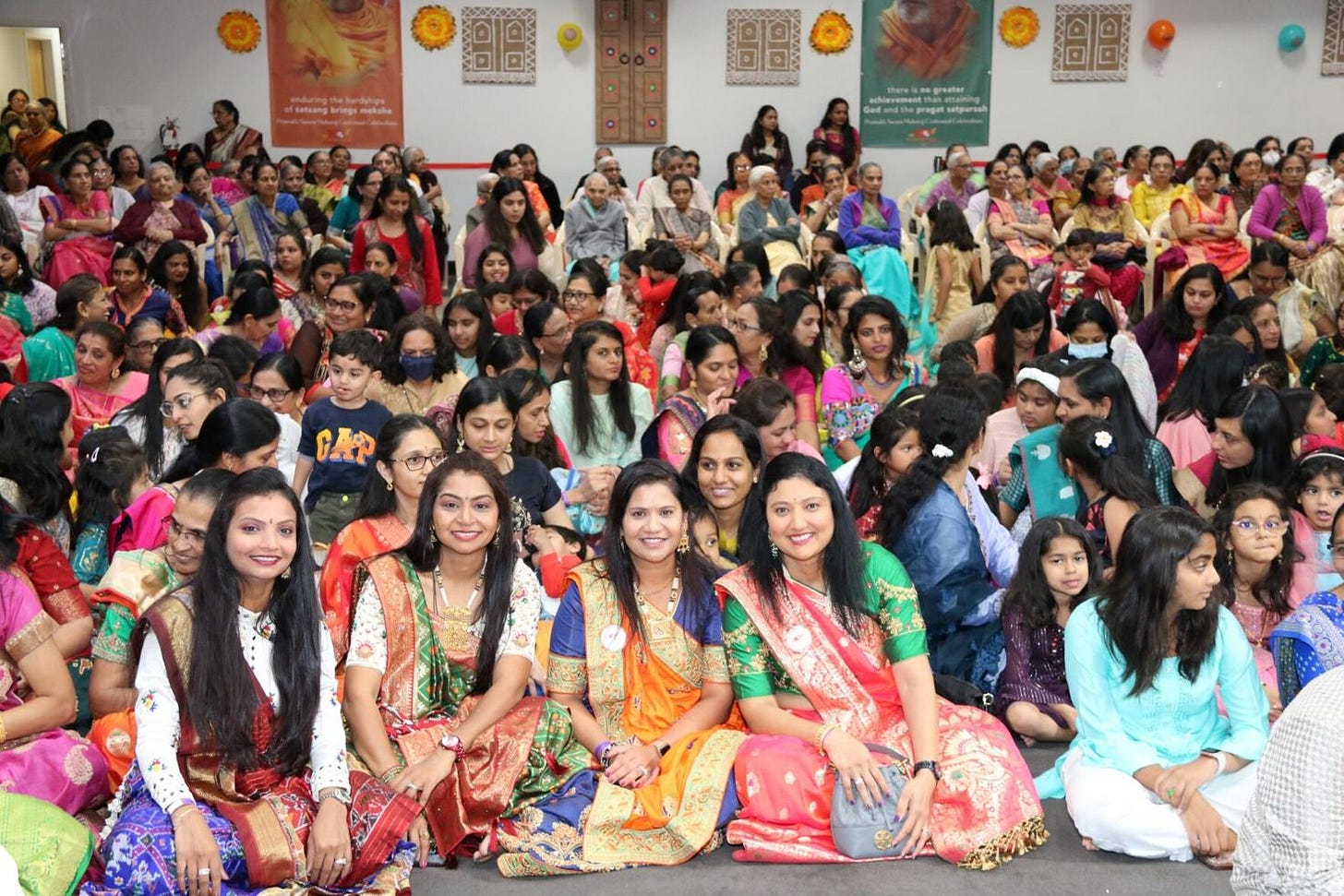In the great turnover of control of America to Normal Americans, known as the Trump administration, there's a lot of talk about H-1B visas. The program that allows employers to sponsor "skilled" immigration into the US. Exposing and reforming, or eliminating, H-1B is an excellent first 100 days project.
At the same time Trump is destroying DIE and Affirmative Action (AA) programs. Discrimination is discrimination. It is illegal, and always has been. Trump is taking the first steps to end these zombie programs--they've been dead from their birth, but just never knew it. DIE and AA have caused grave damage to our country. As have all programs that discriminate against Normal Americans.
That's great. But there's another illegal program that discriminates against Normal Americans. It goes hand-in-hand with H-1B, as well as DIE and AA. 8(a) is the federal program that sets aside billions of dollars of contracts for selected DIE and AA people.
8(a) cloaks this discrimination in language designed to hide its true effects: 8(a) claims that the set aside billions are for "disadvantaged" contractors. So, who is "disadvantaged"? Is it the poor white kid from a trailer park in Kentucky? Nope. His government ignores him. Instead the federal government hands out contracts for billions of dollars to blacks, Indians, Eskimos, Chinese and other specially selected political classes.
"For purposes of the 8(a) program, the following individuals are presumed socially disadvantaged: Black Americans, Hispanic Americans, Native Americans, Asian Pacific Americans and Subcontinent Asian American."
So, what does that have to do with H-1Bs? Indians have this figured out. First, they conspire to game the H-1B system. They set up body-shops that use H-1Bs to import Indian tech workers. Once the H-1B beneficiary has been here long enough, he becomes eligible for his Indian company to sponsor him for permanent residency--a Green Card, with full rights to work, and a path to citizenship. In 5 years, or so, the Indian gets US citizenship.
Now these Indians, blessed and chosen, who've escaped from their shit-hole country of billions of poverty-stricken people, have all the rights of an American citizen. God bless them! Welcome! But, now the connection of the 8(a) program and the H-1B citizenship train: These blessed, lucky, new American citizens, here because they've been working for 10 or so years in a technical field, applying skills, are suddenly declared "disadvantaged"!
Now the "disadvantaged" Indian-American sets up his own company, registers in the 8(a) program, and is awarded government contracts, without competition. Now that he has his own company, with multi-million dollar contracts, providing services to the US government, our lucky Indian needs to hire people to work these contracts. Who does he hire? Normal Americans? Or…does he complete the 8(a)/H-1B circle, and apply for H-1Bs from India? If you guessed H-1Bs from India, you're a winner!
This 8(a)/H-1B circle has had amazing results. The US government farms out much of its technical, IT, hardware and software work to contractors. And the 8(a) program requires that a certain portion of these contracts go to the "disadvantaged" Americans. Indians are experts at this corrupt circle.
This circle has been running since the dot.com boom. But it exploded into the federal tech space after 9/11. Suddenly, federal agencies had billions of dollars to spend to update antiquated IT systems--software, hardware, integration, and more. Now, two decades plus later, Indians have the market cornered. Indian-owned firms dominate the federal IT contracting market. Indian workers dominate nearly every non-security-cleared government agency.
The effects on American society have been profound. In Northern Virginia, where a huge percentage of federal contracts are administered and delivered, swathes of suburbs are miniature Delhis. Schools are closed for Diwali. Indian grocery stores are in every suburb.
The Indians in America, the cream of the crop of their home country's elite, are industrious and stick to their own. But they're also politically savvy. As they settled in with citizenship, they penetrated local political parties. In 2024, nearly every race in Fairfax and Loudoun counties had at least one Indian candidate. Many races featured a Democrat Indian against a Republican Indian. Indians were elected to both US Congress and Virginia's House of Delegates and Senate.
There is nothing wrong with their participation in American economic and political life. But heritage Americans must be aware that the corrupt 8(a)-H-1B circle is profoundly impacting our country.
Indians working in technical fields in the USA are, in no way, "disadvantaged." They are the luckiest, most advantaged sector of their home country. They are also in the top social and economic levels of their adopted country, the USA.
While the focus of this article has been on the corruption of 8(a) by Indians, they are by no means the only group that benefits from this illegal discriminatory allocation of government resources.
Blacks, eskimos, women, hispanics, and Indian tribal members also are on this gravy train. They all participate. However, most of them don't use 8(a)/H-1B circle as Indians do. Most of the other minorities are coached to set up their companies, register as 8(a), and then fill up the ranks of executives and workers with heritage Americans. The "disadvantaged" owners just skim off the profit, and pay the people doing the actual work.
Black-owned companies raking in 8(a)contracts have resulted in Prince Georges County, Maryland being the epicenter of black millionaires in America.
The 8a program, and the H-1B visa, are corrupt scams that disadvantage Normal Americans. We pay for these--directly with our taxes, and indirectly with opportunities forfeited to advantaged immigrants who should be competing on a level playing field.
TL;DR
8(a)contract set-asides for "disadvantaged" Americans work in tandem with H-1Bs to take away opportunities for Normal Americans. Indians have perfected an 8(a)/H-1B circle to control massive amounts of American taxpayer's dollars spent by the federal government. 8(a)must be on the chopping block along with H-1B.
Make America Great Again!
For more information
For purposes of the 8a program, the following individuals are presumed socially disadvantaged: Black Americans, Hispanic Americans, Native Americans, Asian Pacific Americans and Subcontinent Asian American.
The Biden administration’s budget has ushered in more funding for the Small Business Association and the 8(a) Business Development Program in 2022. This new funding ensures there are billions more dollars in federal set-aside contracts allocated for disadvantaged small businesses utilizing the program. If you already have your 8(a) or are looking to be certified, there has not been a better time to begin doing business with the federal government.
From < https://ezgovopps.com/home/8a-business-development-program/?msclkid=e92e036dd911196e46626415e718a6b6>
Eligible to receive sole-source contracts up to $4mm for goods and services and $6.5mm for manufacturing. These sole-source contracts means that they are set aside for 8(a) firms, without having to competitively bid.
Eligible to bid on 8(a) set aside contracts. These contracts are only available to 8(a) firms, and the competition is drastically reduced.
Ability to form joint ventures and teaming agreements to bid on contracts. An 8(a) firm would be interested in doing this to be able to secure larger contracts that it is otherwise unable to bid.
From < https://surety1.com/what-is-an-8a-contractor/>
8(a) Business Development program
Federal contracting and training program for experienced small business owners who are socially and economically disadvantaged.
Members of designated groups.
(1)There is a rebuttable presumption that the following individuals are socially disadvantaged: Black Americans; Hispanic Americans; Native Americans (Alaska Natives, Native Hawaiians, or enrolled members of a Federally or State recognized Indian Tribe); Asian Pacific Americans (persons with origins from Burma, Thailand, Malaysia, Indonesia, Singapore, Brunei, Japan, China (including Hong Kong), Taiwan, Laos, Cambodia (Kampuchea), Vietnam, Korea, The Philippines, U.S. Trust Territory of the Pacific Islands (Republic of Palau), Republic of the Marshall Islands, Federated States of Micronesia, the Commonwealth of the Northern Mariana Islands, Guam, Samoa, Macao, Fiji, Tonga, Kiribati, Tuvalu, or Nauru); Subcontinent Asian Americans (persons with origins from India, Pakistan, Bangladesh, Sri Lanka, Bhutan, the Maldives Islands or Nepal); and members of other groups designated from time to time by SBA according to procedures set forth at paragraph (d) of this section. Being born in a country does not, by itself, suffice to make the birth country an individual's country of origin for purposes of being included within a designated group.
(2)An individual must demonstrate that he or she has held himself or herself out, and is currently identified by others, as a member of a designated group if SBA requires it.
Evidence of individual social disadvantage must include the following elements:
(i)At least one objective distinguishing feature that has contributed to social disadvantage, such as race, ethnic origin, gender, identifiable disability, long-term residence in an environment isolated from the mainstream of American society, or other similar causes not common to individuals who are not socially disadvantaged;
(ii)The individual's social disadvantage must be rooted in treatment which he or she has experienced in American society, not in other countries;
(iii)The individual's social disadvantage must be chronic and substantial, not fleeting or insignificant; and
(iv)The individual's social disadvantage must have negatively impacted on his or her entry into or advancement in the business world. SBA will consider any relevant evidence in assessing this element, including experiences relating to education, employment and business history (including experiences relating to both the applicant firm and any other previous firm owned and/or controlled by the individual), where applicable.










